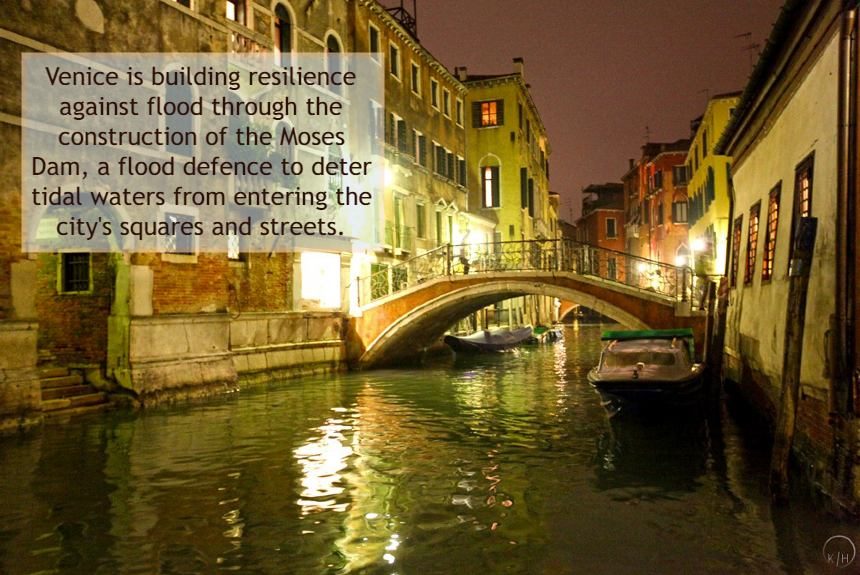On 12 November 2019, Venetians experienced the worst flooding since 1966 when high water reached 1.85 meters above sea level. Not that flooding is an exceptional event in Venice, a city built on islets and in the middle of a lagoon. It experiences regular flooding from high tides or “aqua alta” from the Adriatic Sea.
In recent years, high tides have become more frequent. Alvise Papa, head of the Venice Center High Tides, says that “this is the first time in history that high waters have reached the peak of 1.40 meters five times in a year. The maximum until now had been two times in a year” (Momigliano, 2019).
Mayor Luigi Brugnaro claims this is the effect of climate change. The lowest point in the city, which is also a popular tourist area – St Mark’s Square, is the first to be flooded with high tides of 80 or more centimetres (Momigliano, 2019).
Innovation Origin published an article on the construction of the Moses Dam, a flood defence to deter tidal waters from entering the city’s squares and streets. Plans to build a flood barrier began after the 1996 tsunami. The city inaugurated the flood barrier in July 2020 and will officially open it on 21 December 2021 (Kieckens, 2020).
The article describes the flood barrier: “The Venetian flood barrier comprises 78 caissons lying on the bottom (12-14 metres) of the three inlet channels that link Venice’s lagoon to the Adriatic Sea. The total length of the dam is 1.6 km. A hollow metal sluice gate filled with water sits at the bottom of each concrete basin” (Kieckens, 2020).
Moses Dam is an excellent example of climate adaptation against flooding. With predictions of continuous sea-level rise and more ferocious storms, rains, and winds, the Moses Dam would prove a wise investment for Venice to build resilience and protect its residents and tourism industry from damage and losses caused by frequent flooding.
To know more about the Venetian flood barrier as a climate adaptation strategy, its construction, and the maintenance required to operate it, CLICK on the link below:
Source:
Momigliano, A. (2019, November 20). The Flooding of Venice: What Tourists Need to Know. The New York Times. Retrieved from https://www.nytimes.com/2019/11/20/travel/venice-flooding.html
Kieckens, E. (2020, July 10). Venice keeps feet dry thanks to the Moses Dam. Innovations Origins. Retrieved from https://innovationorigins.com/venice-keeps-feet-dry-thanks-to-the-moses-dam/
BACKGROUND PHOTO CREDIT: Venice, Italy, by Karl Hipolito. The owner of this photo has permitted its use.



Leave a Reply